Dear Artist,
“Because nearly all good ideas are based on others that came before them, clothing that resembles a vintage style or an earlier design may be praised as “smartly referential,” wrote Ezra Marcus recently for the New York Times. “Stray too close to copying an idea, and you have created a knockoff.” Worse than this is the deliberate crime of counterfeiting, when “sellers copy not just a brand’s style but impersonate its identity — replicating its logos, tags or trademarked designs in order to market a fake as the real deal.” Brands, at times, have resorted to trademarking gimmicks in an effort to differentiate and elevate otherwise generic items into luxury goods. Celebrity endorsements and acclaim from fashion editors provide the argument for specialness, helping a sneaker out. But “only those with no memory,” said Coco Chanel, “insist on their originality.”
Marcus examines the 1,500 trademark infringement lawsuits filed in recent years by hot streetwear brand Off-White. In art, the fine line between the “smartly referential” and “knockoff” can be similarly vexing, though the lawsuits are far less frequent — perhaps it has something to do with the wide berth artists grant one another amidst our collective grasping at greatness. We are all working, ideally — many of us without reward — towards the advancement of the artform, and the ideas and influences we all revere. Or are we?
Looking at art on social media, I’ve noticed a lazy homogeneity. The place is actually lousy with “borrowing”; not just of ideas with regard to composition, style, technique and hard-won methodologies, but of those little, personal details that define an artist’s identity, like presentation, palette, process and context. I’ve even noticed the lifting of artist’s statements and reported studio habits.
Perhaps it’s a kind of innocent, collective creative consciousness that has always existed. Take, for example, the first time I visited the Art Gallery of New South Wales and drooled over a new world of excellent artists, painting similarly to the Europeans of their era, but who were virtual unknowns outside of Australia. Were these artists in isolation, picking up on global frequencies of impressionist landscape and modernism, simultaneously exploring what was possible from within the relative vacuums of their antipodean studios? Or was something else afoot — perhaps a voyager who studied abroad and brought back the fire stick of a trailblazer? Who had the idea first? Is there such a thing? Does it matter?
Today, we enjoy unfettered access to one another’s work by way of the information highway, where it can be tempting to fast-track our own creative and professional hardscrabble with the hard-won processes of another. Does this work and presentation ring hollow due to a borrowed origin? Or are they less recognizable as pastiches as we grow accustomed to a saturated, diluted, derivative and broad market of images? Let’s face it: we all have influences. And it’s hard work to be original. You must burn to stride into the unknown and advance what has come before you, nevermind to discover what hasn’t yet been seen. We all stand on the shoulders of the innovations of our forebears. When we recognize that our every stroke carries with it someone else’s previous idea, we may be taking the first step in eschewing the impulse to simply make a knockoff.
Sincerely,
Sara
PS: “All has not been said and never will be.” (Samuel Beckett)
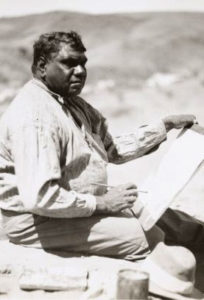
Albert Namatjira (1902 – 1959), (Arrernte). Namatjira was the first indigenous artist to paint and exhibit professionally in the Western style. Source: Australia Post, July 2002, on the release of the Namatjira Centenary stamp series.
National Library of Australia photo, 1946.
Esoterica: I’ve noticed that there’s a tendency amongst painters who look too often at one another to congeal into a homogeneous glob. And there’s the studio assistant or mentee who becomes too intimate with the processes of their mentor and simply slips into production of the same, with a new signature. Masters, if not careful, create clones. Originality, on the other hand, begins with the ability to think independently and creatively. How do you do that? It requires a conscious unshackling from the zeitgeist and therefore the groupthink of social media, school, art groups and other sources, and the deliberate rejection of the techniques and processes of nearby travellers. If you think you might be leaning too heavily on the voices of others, try referencing exclusively from a medium outside of your own for at least three months. For a painter, for example, try reading. Make your own images from the inspiration of a more distant star. Grow, work, steer and innovate with care and also wild abandon. The road less travelled will in time, deliver your own authentic discoveries. “Love art, love yourself, do what you have to do and what only you can do,” wrote Roberta Smith. “Utter honesty is the only path to originality.”
Have you considered a Premium Artist Listing? With each letter, an artist is featured at the bottom of this page. The Premium Artist Listings are a means of connecting artist subscribers through their work. Proceeds from each listing contribute to the production of The Painter’s Keys.
“What the world calls originality is only an unaccustomed method of tickling it.” (George Bernard Shaw)
Featured Workshop
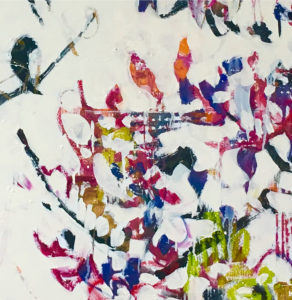 Join Ellie Harold for “Intuitive Painting: Permission to Paint Expressively,” designed especially for mature women artists of all skill levels who wish to explore this medium for soulful exploration. The retreat provides attractive accommodations (your own room!) along with lightly structured activities for centering, relaxation and low stress art-making. You’ll have plenty of free time to muse, paint, write and reflect while enjoying the colors, textures and flavors of San Miguel. This Retreat has the potential to transform not only your art but your life! You’ll return home with a specific art “care plan” to assure support for further creating. Details at www.EllieHarold.com.
Join Ellie Harold for “Intuitive Painting: Permission to Paint Expressively,” designed especially for mature women artists of all skill levels who wish to explore this medium for soulful exploration. The retreat provides attractive accommodations (your own room!) along with lightly structured activities for centering, relaxation and low stress art-making. You’ll have plenty of free time to muse, paint, write and reflect while enjoying the colors, textures and flavors of San Miguel. This Retreat has the potential to transform not only your art but your life! You’ll return home with a specific art “care plan” to assure support for further creating. Details at www.EllieHarold.com.

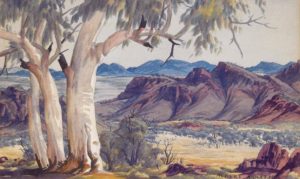
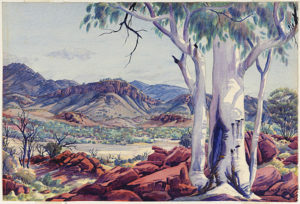
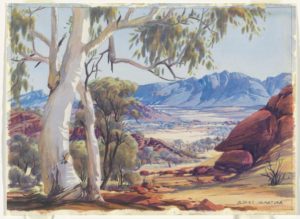
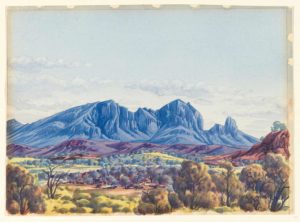
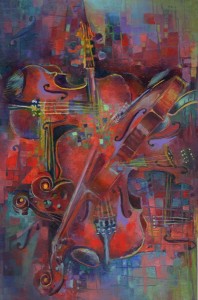



18 Comments
Excellent meditation on originality, expectations and motivation in art. Thanks.
I’m trying to get a laugh out of you here, Sara. This was a good read and I struggle with this. Funny part is, I thought it had been written by your dad.
I, too, marveled at the similarity of voice! I thought Bob had written it, but that the content was “too new” and was in a bit of a limbo of confusion until I realized Sara had written it!
Lovely work, Sara! I find it amazing & comforting that you can carry on with your dad’s blog with such consistency of insight & beautiful writing.
I agree!!
And how funny that so many of us thought the post sounded so much like Sara’s dad–when she’s talking about the struggle to be original! No criticism here Sara–we are just admiring your wisdom and insight, just as we did your father’s.
I realized it was not Sara’s dad due to length! He rarely wrote lengthy newsletters.
She is definitely her father’s daughter, while being her own person, all at once. What a neat trick!
So interesting, Sara, as we see “knock-offs” all around us. What is amazing that one also sees that imitation in the world of art-making, wherein the very foundation of the process and what gives it its particular value is its expression of an idea that is “one-of-a-kind.” And why would someone who truly seeks to be an “artist” even want to gravitate toward imitating someone else? I would suggest that all kinds of “borrowing” of imagery, composition, color mixes goes on in the visual arts, but the degree of that borrowing can be so blatant that it becomes “stealing,” which–as you mention–introduces homogeneity. It’s hard to leave the tried-and-true to stand on one’s two feet: but the world doesn’t need any more of The Same Thing: we need The True Thing.
I agree with your premise, and with the other commenters so far, about the rampant copying of others. It is SO important that you “lock yourself in your room” as Bob would have reminded us.
But, on the other hand, how does one “protect” oneself from copycats?! It’s grist for a mill to constantly strive for innovation in one’s work – which is fantastic! – but it also doesn’t fly well with galleries. And speaking of galleries, there are those I’ve seen who exhibit the work of blatant knockoffs in order to capitalize on a trendy style. This doesn’t help the situation of young artists wanting to be original, but also wanting to see some cash!
I suppose it can be flattering to have artists copy your work, but if you’d like to follow up with some ideas of how to prevent copycats, please feel free! :) Thanks, Sara!
So totally true and timely. Just look at the #NFT bandwagon- it’s full of the same kinds of content. The real innovators rise to the top in any medium. When you feel it’s an artist’s authentic truth, it probably is. And it takes great courage to show your vulnerable self.
About 20 years ago, I visited the little town in the Okanagan valley where I now live and visited the town art gallery. I entered and discovered a small show by local painters under way. A number of the pieces on display appeared to be knock-offs of your dad’s work and style. I asked the gal on the desk if Robert Genn had done a workshop in the town recently and she said proudly that he had and most of the local painters had taken part.
That was my first exposure to the idea that painting workshops had a decided downside. Fortunately, the “Genn Effect” proved to be short lived and I suspect many of those exhibitors are now my painting colleagues.
I know you’re on to something, Sara. I have a Facebook account with dozens of artists as friends. There are days when I flick through the art posted and am dismayed at the similarity of it all. One or two artist’s work stands out, but too much is repetition of what’s in vogue recently. The frustration is that technically the pieces are all good, but missing that spark of originality. I worry that my own work could fall into that same trap just by following the facebook parade. It’s an easy trap to fall into and one we need to always fight against.
I have often thought there is a fine line we travel as we study old masters (the original avenue of art instruction) and then obey our own need to do it just a little different. So true these days with rampant workshops. I realized I needed to sort gimmick or style from solid art principles. I value the many I have attended but stick with my original mentor, Joe Abbrescia who cautioned looking like everybody else and going for how can this advance my understanding of what I want for my painting.
Excellent reminders and thought-provoking insights Sara! I’ve been giving a lot of thought to this very thing: how access to unprecedented visual information in the arts is swaying us from ‘rugged-individualism’ into the unintended homogeneous creative melting pot. Your dad’s advice about ‘quality is always in style’ and ‘PMII’ (put more into it), has been my mantra lately.
yes, Sara, thank you. totally agree, well said.
It can be tricky to tell if you are being original, or were you influenced by something you saw? I did a painting of a close up of an elephant, I thought it was an original idea, but later I have seen a bunch of paintings that are the same idea. Now I am not sure if I came up with the idea or did I see something that I had forgotten about? Sometimes you can’t be sure about what your influences have been, especially since you might have seen something years before and have forgotten where you saw it.
I think it is interesting to strive for originality, but I agree with some other comments on how tricky it can be when you can’t place your finger on where an influence may or may not have come from. Or did it simultaneously happen, as you’ve written here – a case of minds thinking alike independently? I was a bit taken aback when I read your line about standing on the shoulders of forebears – as just 3 weeks ago my newsletter (Standing on the Shoulders of Giants, 4/9, on my website) was about the appreciation of our forebears and their influence. While your letter focuses on originality and not copying our influences, mine was about recognizing the life of others that live through us . Some of my letter was about my work of about a year ago which was a riff on Hokusai’s Great Wave. It’s meant as a reverential work, an ode to the universal theme and its many interpretations over the centuries. ( I have a write up about my version, etc, linked in the newsletter). It’s unlike anything I have done before or since. But I can see that such a direct reference probably feels like a copy, a steal, to some, or to many. I’m going to enjoy ruminating on the thought of originality when using historical references to convey a theme with modern twists. So thanks for another provocative letter!
Beautiful insightful comment.